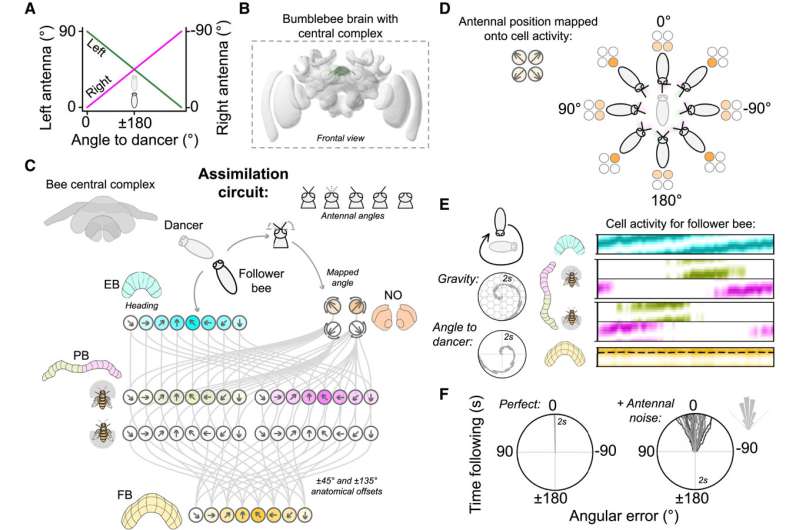This article has been reviewed according to Science X's editorial process and policies. Editors have highlighted the following attributes while ensuring the content's credibility:
fact-checked
trusted source
proofread
Bees use antennae to decode hive mates' dances

Scientists have discovered how honeybees can decipher dances by their hive mates that relay directions to food. The findings, published in Current Biology, reveal how, in the complete darkness of the hive, each bee uses its antennae to interpret the information communicated through the dances.
It has been known for decades that honeybees do so-called waggle dances, in which their movements and orientation on the honeycomb signal the direction and distance to food outside the hive.
However, until now, it was unclear how the bees gathered around a waggle dancer make sense of the information.
Gaining greater insights into how bees communicate could help scientists to better understand the effects of issues such as habitat loss and pesticide use on the insects' ability to find food, researchers say.
Bee colony
An Edinburgh team made the discovery by studying a colony of honeybees at an apiary at the University and using computational models to mimic their brain processes.
Researchers from the School of Informatics filmed the insects in slow motion and high resolution under infrared light.
This enabled them to track the position of the antennae of the surrounding bees in fine detail during each waggle dance—which are otherwise a blur to the naked human eye.
Antennae position
The researchers observed that bees alter the position of their antennae, which are touched repeatedly by the dancer as it waggles by, based on the angle of their body relative to the dancer.
The team realized that the bees could decode dances from any angle, or even from constantly changing positions, by combining signals picked up by their antennae with their own sense of gravity.
However, this requires the bee to accurately add together the two angles detected from its two sensory systems.
"Understanding how the small brains of insects carry out such sophisticated calculations can help us design more compact and energy efficient computers," says Professor Barbara Webb of the School of Informatics.
Brain circuits
Using a computer model that replicates known brain circuits in the bee, the researchers showed that fewer than one hundred neurons are needed to integrate this information and recover the angle and the distance to the food being signaled in a waggle dance.
"This is particularly exciting because it unveils a remarkably elegant neural mechanism employed by bees to decipher complex information with minimal resources," says Anna Hadjitofi of the School of Informatics.
More information: Anna Hadjitofi et al, Dynamic antennal positioning allows honeybee followers to decode the dance, Current Biology (2024). DOI: 10.1016/j.cub.2024.02.045
Provided by University of Edinburgh




















